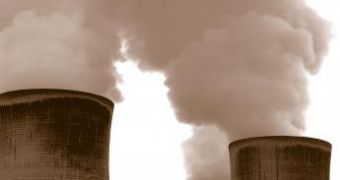The news just broke that, according to a new report put together by researchers working with the World Meteorological Organization, the year 2011 witnessed the establishment of a new record in terms of atmospheric greenhouse gases concentrations.
The report took into consideration chemical compounds such as carbon dioxide, methane and nitrous oxide, and found that the atmospheric concentrations for each of these compounds had increased to a considerable extent.
Although it is true that several naturally occurring processes and phenomena release carbon dioxide (CO2), methane (CH4) and nitrous oxide (N2O) into the atmosphere, the World Meteorological Organization maintains that the bulk of these harmful compounds comes from human activities.
In other words, decomposing plants and animals might play their part in upping atmospheric greenhouse gases concentrations, yet their impact on the environment is merely child's play when compared to industries that burn whopping amounts of fossil fuels on a regular basis.
Here are the raw numbers: CO2 concentrations scored 390.9 parts per million (that's roughly 140% more than preindustrial levels), CH4 hit 1813 parts per billion (259% of its preindustrial levels) and N20 scored 324.2 parts per billion (120% of its preindustrial level).
“The three greenhouse gases shown in the table are closely linked to anthropogenic activities, and interact strongly with the biosphere and the oceans,” the report reads.
Other potentially harmful chemical compounds found to “inhabit” the planet's atmosphere in relatively troubling concentrations are sulfur hexafluoride, ozone-depleting chlorofluorocarbons and minor halogenated gases.
As Michel Jarraud, the secretary-general for the World Meteorological Organization puts it, “We have already seen that the oceans are becoming more acidic as a result of the carbon dioxide uptake, with potential repercussions for the underwater food chain and coral reefs.”
“There are many additional interactions between greenhouse gases, Earth’s biosphere and oceans, and we need to boost our monitoring capability and scientific knowledge in order to better understand these,” Michel Jarraud went on to add.
Meanwhile, 483 power companies are thinking about building 1,199 new coal plants.

 14 DAY TRIAL //
14 DAY TRIAL //